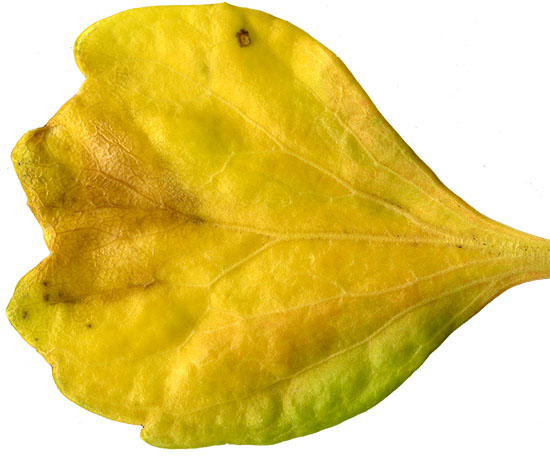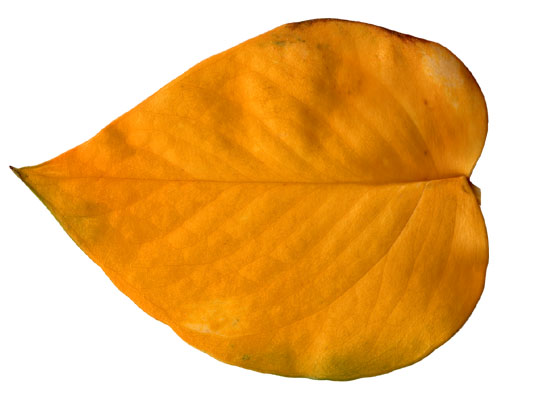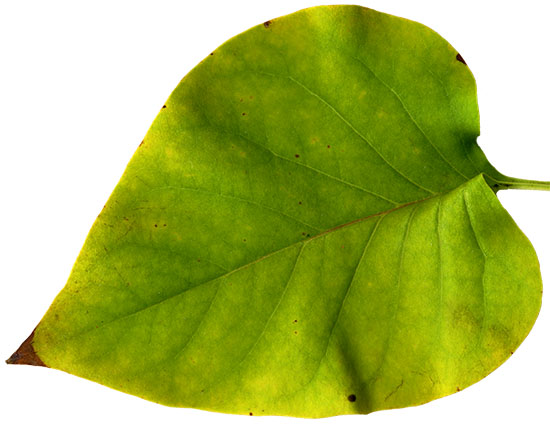
Kathryn Wadsworth
David and I have been having a great time teaching Master Gardener classes the last couple of weeks. Recently we spent six hours covering some good answers to the question they’ll get every day in Plant Clinic: “What’s Wrong With My Plant?”
Sometimes it can be difficult to determine whether you are dealing with a disorder, a disease, or a pest. But 80% of the time the problem is a “disorder”, that is, a problem with the growing conditions.
Accurate diagnosis requires detective work. Like a forensic scientist, you need to collect evidence, examine the clues, and arrive at a diagnosis. The process involves asking questions designed to detect information that eliminates, one by one, all alternative causes and results in an accurate diagnosis.
Leaf symptoms can look remarkably similar, but have very different causes. By asking the right questions about the plants’ circumstances, you can come up with an accurate diagnosis.

Yellow leaves on Pachysandra
The leaves at the tip of the branch, in other words, the young leaves, on this pachysandra (Pachysandra) turned completely yellow. Plants that require partial shade can suffer from this condition in a variety of circumstances.
Solutions include moving the plant to a shadier area, planting a larger plant nearby to give this ground cover more shade, or constructing a small trellis overhead to cast shadows below.

Yellow leaf on a pothos
This pothos (Epipremnum) grew in soggy soil because its pot stood in a water-filled saucer. The leaves at the base of stems, namely the older leaves, turned yellow and dropped off.
A simple solution. First of all, make sure the pot has good drainage and the growing media has a chance to dry out between waterings. Then, after watering your house plants, make sure the saucer does not have standing water in it. Dump the water out.

Yellow rhododendron leaf
The soil was not soggy, yet this leaf at the base of a rhododendron (Rhododendron) branch turned completely yellow and dropped off. All leaves have a limited life span. Even conifers and broad-leaved evergreens like rhododendrons shed their oldest leaves.
The solution to this one is easy – don’t worry about it.

Yellowing lilac leaf
Leaves at the base of branches are the old, mature leaves. When they begin to turn yellow, while the main veins remain green, as they have on this lilac (Syringa), they point to nitrogen or manganese deficiency.
Maintaining healthy soil helps eliminate this problem. Add organic compost, fertilizer, and mulch twice a year to encourage all the beneficial soil organisms to thrive, thus nurturing a balanced soil micro-eco-system (boy, that’s a mouthful). If this is a nutritional emergency try a liquid fish fertilizer.

Leave a Reply